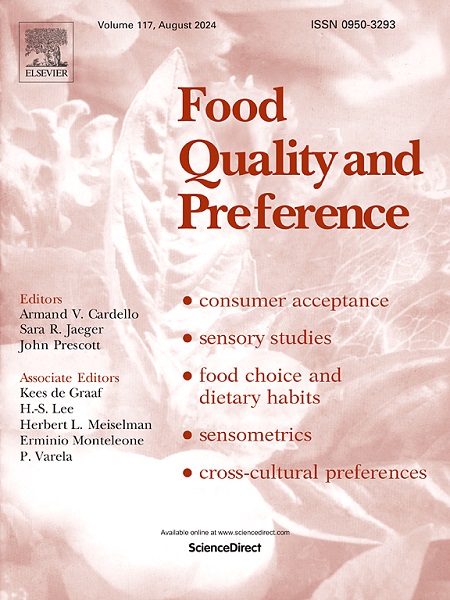葡萄酒、香水和食品评论中的化学感官词汇:语言建模的启示
IF 4.9
1区 农林科学
Q1 FOOD SCIENCE & TECHNOLOGY
引用次数: 0
摘要
化学感觉通常难以描述和量化。语言模型有助于系统地理解感官描述。我们获取了消费者和专家对葡萄酒、香水和食品的评论(英语;共约 6800 万字),并分析了它们的感官描述。我们使用一种基于自然语言数据的新型数据驱动方法,比较了三种化学感官词汇(葡萄酒、香水和食品)的词汇重叠和语义属性,并探索了它们的语义空间。这三个词汇主要在领域特异性、具体性、描述符类型偏好以及味觉与嗅觉关联程度方面存在差异。葡萄酒词汇主要区分白葡萄酒和红葡萄酒的风味和品质。食品词汇则区分了可饮用和可食用的食品和配料,以及咸味和非咸味产品。这三个词汇的一个显著区别是具体词汇和抽象/评价词汇。价值在这三个词汇的语义空间中也起着作用,但与一般嗅觉词汇相比,价值在这里并不那么突出。我们的方法可以对三个产品领域的感官描述符进行系统比较,并提供一种数据驱动的方法来推导感官词典,供感官科学家使用。本文章由计算机程序翻译,如有差异,请以英文原文为准。
Chemosensory vocabulary in wine, perfume and food product reviews: Insights from language modeling
Chemosensory sensations are often hard to describe and quantify. Language models may facilitate a systematic understanding of sensory descriptions. We accessed consumer and expert reviews of wine, perfume, and food products (English language; about 68 million words in total) and analyzed their sensory descriptions. Using a novel data-driven method based on natural language data, we compared the three chemosensory vocabularies (wine, perfume, food) with respect to their vocabulary overlap and semantic properties, and explored their semantic spaces. The three vocabularies primarily differ with respect to domain specificity, concreteness, descriptor type preference and degree of gustatory vs. olfactory association. Wine vocabulary primarily distinguishes between white wine and red wine flavors and qualities. Food vocabulary separates drinkable and edible food products and ingredients, on the one hand, and savory and non-savory products, on the other. A salient distinction in all three vocabularies is between concrete and abstract/evaluative terms. Valence also plays a role in the semantic spaces of all three vocabularies, but valence is less prominent here than in general olfactory vocabulary. Our method allows a systematic comparison of sensory descriptors in the three product domains and provides a data-driven approach to derive sensory lexicons that can be applied by sensory scientists.
求助全文
通过发布文献求助,成功后即可免费获取论文全文。
去求助
来源期刊

Food Quality and Preference
工程技术-食品科技
CiteScore
10.40
自引率
15.10%
发文量
263
审稿时长
38 days
期刊介绍:
Food Quality and Preference is a journal devoted to sensory, consumer and behavioural research in food and non-food products. It publishes original research, critical reviews, and short communications in sensory and consumer science, and sensometrics. In addition, the journal publishes special invited issues on important timely topics and from relevant conferences. These are aimed at bridging the gap between research and application, bringing together authors and readers in consumer and market research, sensory science, sensometrics and sensory evaluation, nutrition and food choice, as well as food research, product development and sensory quality assurance. Submissions to Food Quality and Preference are limited to papers that include some form of human measurement; papers that are limited to physical/chemical measures or the routine application of sensory, consumer or econometric analysis will not be considered unless they specifically make a novel scientific contribution in line with the journal''s coverage as outlined below.
 求助内容:
求助内容: 应助结果提醒方式:
应助结果提醒方式:


